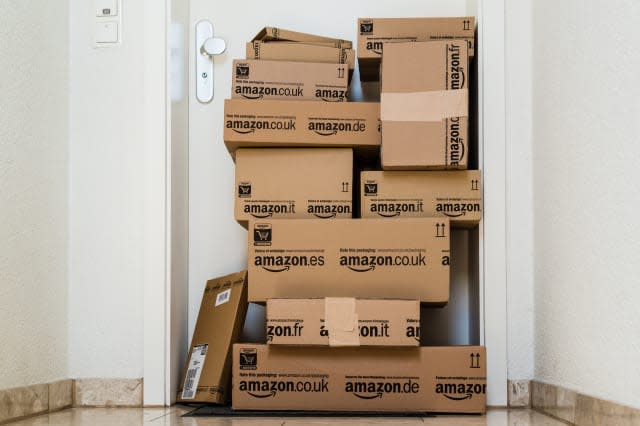Amazon raises minimum spend for home delivery

Amazon has shocked customers, by doubling the amount they have to spend in order to qualify for free delivery. Previously it introduced a minimum spend of £10, but it has now doubled that to £20. It raises the question of whether the tide is turning against free delivery.
The company introduced the minimum spend in July 2013 for some departments. In January 2014 it extended this to all departments. Now it has hiked this to £20 - although those buying at least £10 of books will still qualify for free Super Saver delivery.
%VIRTUAL-ArticleSidebar-deals%
Why?
Part of the reason could simply be to encourage people to buy more each time they shop at Amazon. When faced with a choice between paying for shipping, or paying a little bit more for an extra item to take you over the £20 minimum, some shoppers will choose to add to their basket - increasing sales and improving the bottom line for the firm.
There's also a chance that the move is part of an attempt to shift the company's business model. It may be hoping that when faced with the prospect of paying for every delivery, shoppers might reconsider paying for Amazon Prime. It costs £79 a year, and offers free one-day delivery on some items, as well as access to Prime Instant Video, and other perks.
As a business model, this makes far more sense for Amazon. Shoppers feel they get more value the more they shop, driving loyalty to the site. Some estimates claim that the average Prime member spends twice as much at Amazon as a non-member, partly out of a desire to maximise the benefits of membership, but also because one-day delivery removes much of the advantage of shopping offline.
It also enables the company to invest in delivery innovations such as delivery to post offices, same-day collection - and even delivery to your car boot in Germany - because rather than eating into the company's profitability with each delivery, Prime membership will cover a good part of the cost.
Is this the end of free shipping?
There is a good chance that this is the thin end of the wedge, and we will see other companies increase their minimum spend or remove free delivery altogether.
Packing and shipping costs are rising faster than inflation, so that those who build shipping into their prices and offer free delivery either need to keep raising their prices, or living with a lower profit margin.
In an age of price comparisons, raising prices is risky, because customers will simply shop elsewhere. However, eventually there's a good chance they will no longer be able to absorb the higher costs of postage and packaging. In some instances, they will need to change their model to more accurately reflect their costs.
In the past this has always been difficult, because Amazon encouraged people to expect free shipping, and so they didn't appreciate the cost of sending items through the post. Now Amazon has increased the minimum spend, it could influence how people think about shopping, so that a shipping charge becomes more acceptable.
Of course, it has to help the online stores that all these years of Amazon offering free delivery and rock bottom prices have driven many local retailers out of business. In many cases, those who want to turn to the high street in order to avoid a delivery charge, are going to discover that the high street no longer offers what they need.
But what do you think? Are you happy to pay for delivery, or do you feel cheated? Let us know in the comments.
Shopping on AOL Money
UKIP voters favour Brussels sprouts: how does your party shop?
10 great vouchers to get you ready for the beach
Is the booze cruise set for a comeback?




